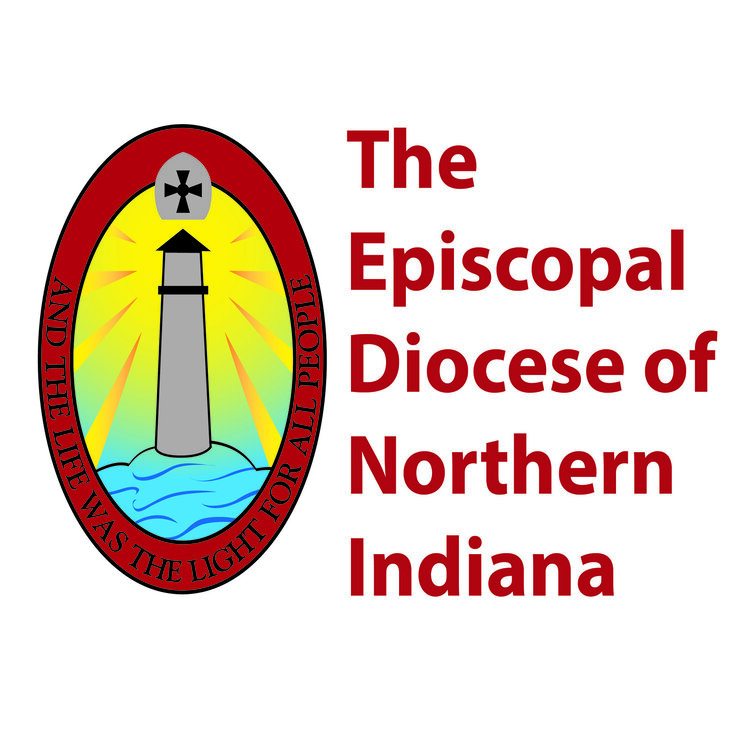Church Buildings for Collaborative Partnerships
A Project of the Episcopal Dioceses of Indianapolis and Northern Indiana,
Partners for Sacred Places, and Indiana Landmarks,
funded by a Thriving Congregations Initiative grant from Lilly Endowment
The Church Buildings for Collaborative Partnerships (CBCP) project is blessed by prayer and theological reflections that help frame our learning in faith and root it in the Gospel of Jesus Christ. At the third online training session for CBCP Cohort 3 (the session that occurs prior to CBCP Site Visits), Brendan O'Sullivan- Hale, Canon to the Ordinary for Administration and Evangelism for the Episcopal Diocese of Indianapolis, offered this thought-provoking and inspirational message.
October 19, 2022 - This past weekend I had the pleasure of going to Christ Church in Madison, in the southern part of this diocese on the Ohio River. One of the things I was asked to do there was some teaching on the Daily Office, specifically Morning Prayer. In many of our congregations there isn’t a priest every Sunday, or even most Sundays, so Morning Prayer is what we do. And I expect that many of us gathered here tonight have a personal practice of the daily office, or another form of prayer that helps us to draw near to God.
One of the things that is important to understand about Morning Prayer is that it’s not a Holy Eucharist junior, some sort of inferior service, but one that has a distinct spirituality, and even a sacramental quality. Now what I mean when I speak of a sacramental quality is what is taught in our catechism: that a sacrament is an outward and visible sign of an inward and spiritual grace.
The Holy Eucharist derives its sacramental quality from an obvious source, the outward and visible signs of bread and wine, the body and blood of Jesus Christ. In receiving communion over the years, our faith teaches us, we are united to Christ in his sacrifice, and remade in his image. Morning Prayer derives its sacramental quality from Christ’s promise that wherever two or three are gathered together, he is in our midst. I would argue that the community gathered is the outward and visible sign, and the spiritual grace is the real presence of Christ, even in the absence of the Eucharist.
Repeatedly taking communion and gathering together in trust in Christ also equips us for living
sacramentally, for finding God’s grace in all the outward and visible signs that surround us. And I wonder about what happens if we think about our buildings in this way. In the neighborhoods where we’re located, our church buildings are often very visible signs, having been community landmarks, often for decades, sometimes a century or more. One of the things Partners for Sacred Places is teaching all of us is about the economic impact our church buildings bring to our communities, and that our buildings are worthy of financial support beyond our congregations, whether through rental income or philanthropy. And of course it’s wonderful for our churches to give their spaces to mission partners, too. One of my great hopes for what we’re doing here is not just learning to rent or give away space as a technical matter – though indeed it is important to be good about these things, but to be deliberate about seeing these buildings as an asset for the spread of God’s grace and love.
One of the collects towards the end of Morning Prayer reads in part, “Lord Jesus Christ, you stretched out your arms of love on the hard wood of the cross that everyone might come within the reach of your saving embrace.” I imagine how much different our neighborhoods could be if we saw our buildings as open as Christ’s arms, with people who come in for whatever reason finding themselves received with hospitality, enfolded in grace.
What comes next in this project is to me the most exciting part, the site visits. I love church buildings as much as the next Episcopalian, so I’m looking forward to touring your buildings in the coming months. But I’m even more excited about the invitations you’ll be making to leaders of your communities who will help you see things you never saw before about how your buildings can be instruments of God’s grace, even if that’s not the vocabulary those folks would use.
Just weeks after the site visit at St. James in New Castle, their parking lot was being used to build wheelchair ramps for disabled veterans. A year after the site visit at St. John’s Mount Vernon, that church is preparing to open a previously vacant house to be a peaceful place to be for children in the traumatic situation of having to be separated from their families by DCS. There are more stories like this – and they come from the work we’re calling you to – to discern what mission God is uniquely calling your congregation to, and to find other people of good will in your communities to see how you can advance that mission together.
The Rev. John Denson from St. Paul’s Indy just talked about the importance of the aim of this project not just being how can we save ourselves, and I think that’s just right. We already have a savior. The question before us is how will we, as saved people, will use every gift God has entrusted to us as a means to spread the love and grace and mercy and justice and beauty of God to every person we as individuals and congregations touch. Through prayer, through the Eucharist, through a life steeped in sacrament, God’s presence in all the outward and visible signs around us, God equips us for this mission, each and every day.
